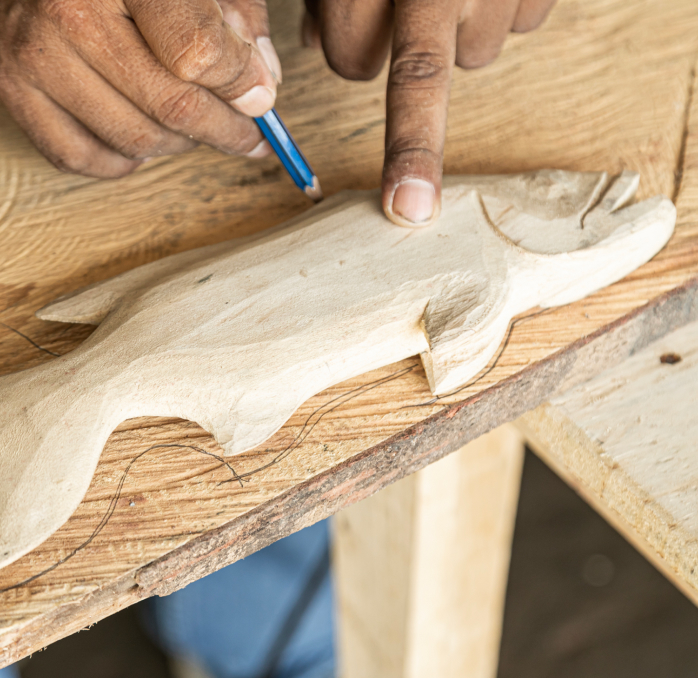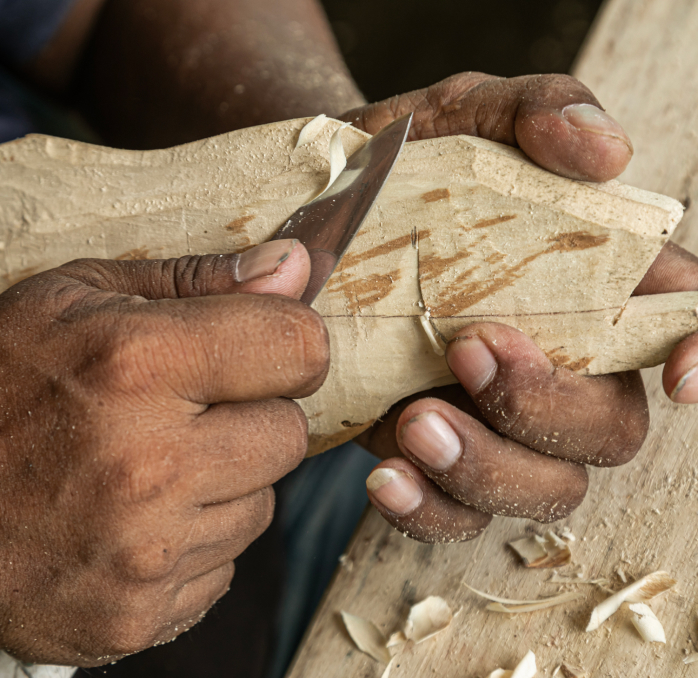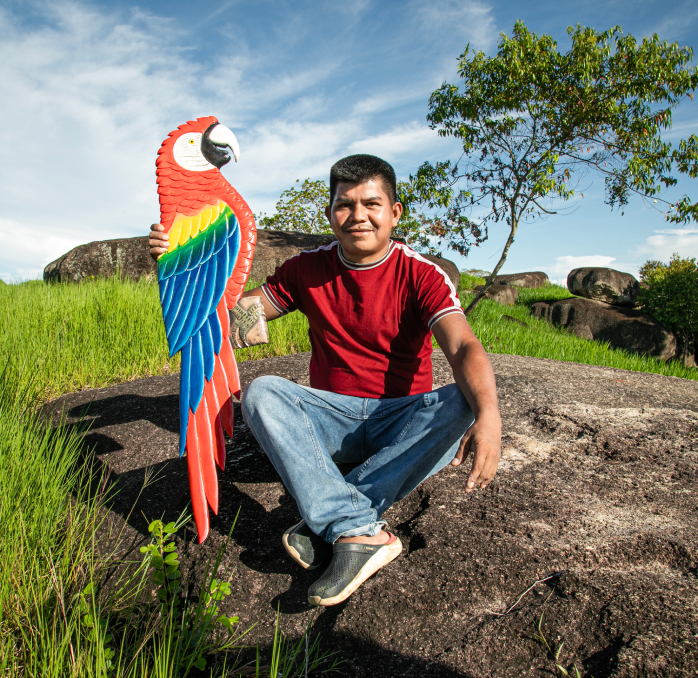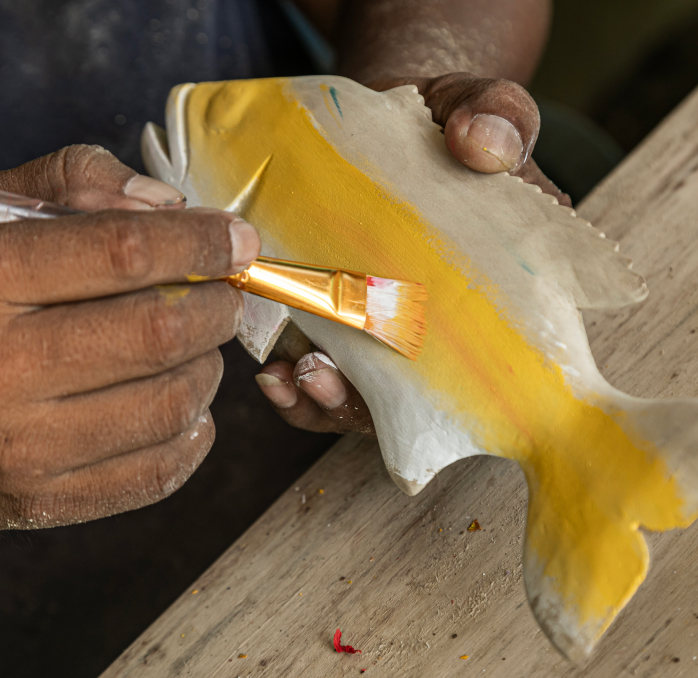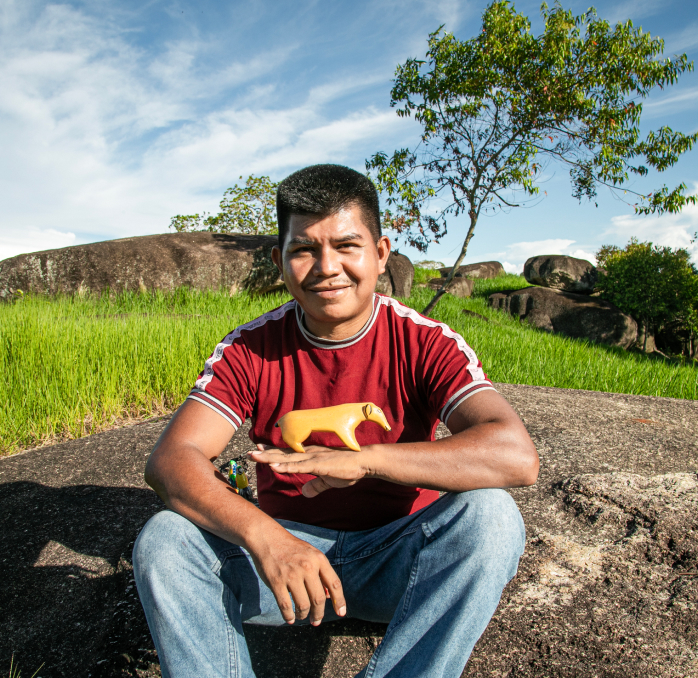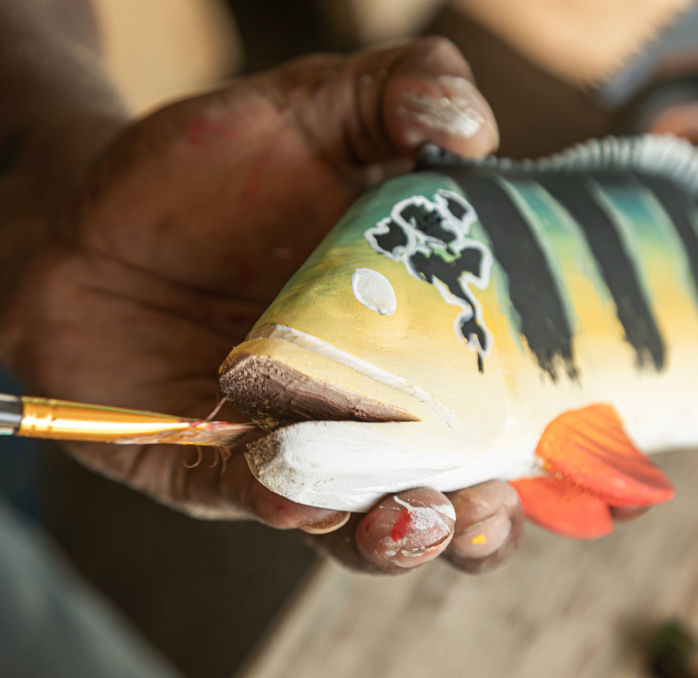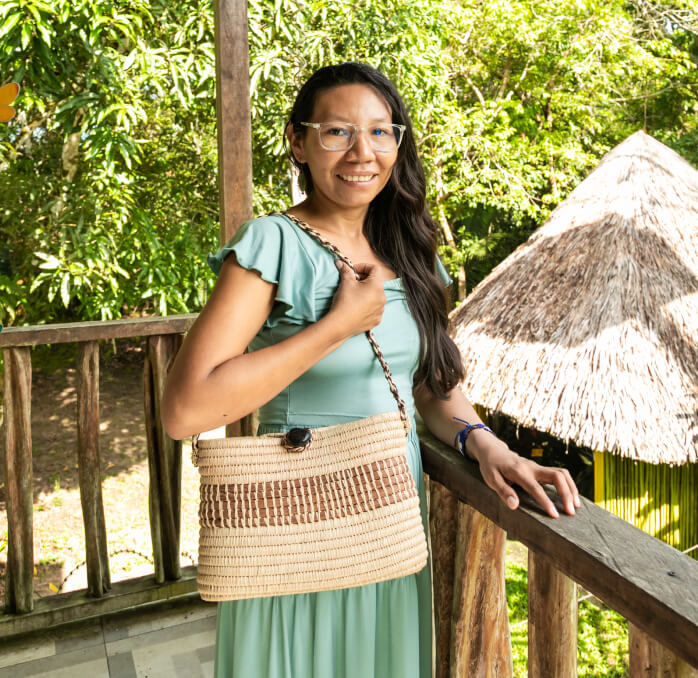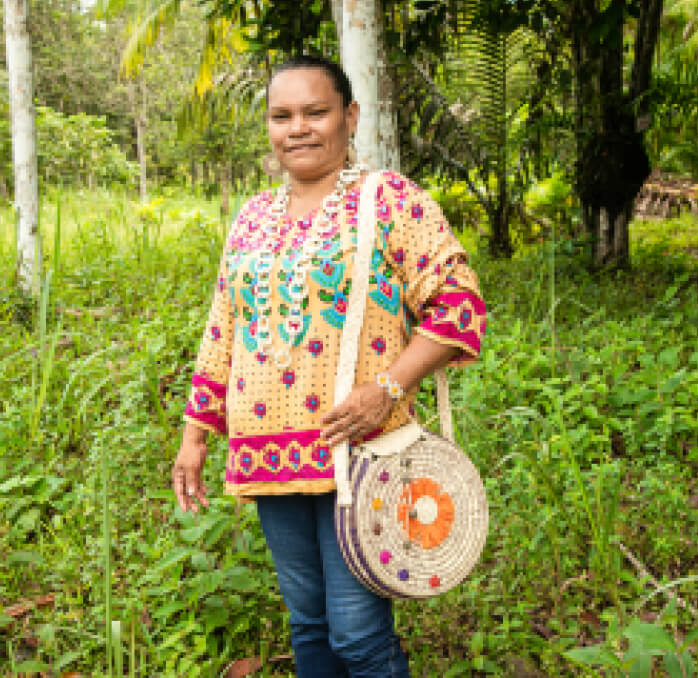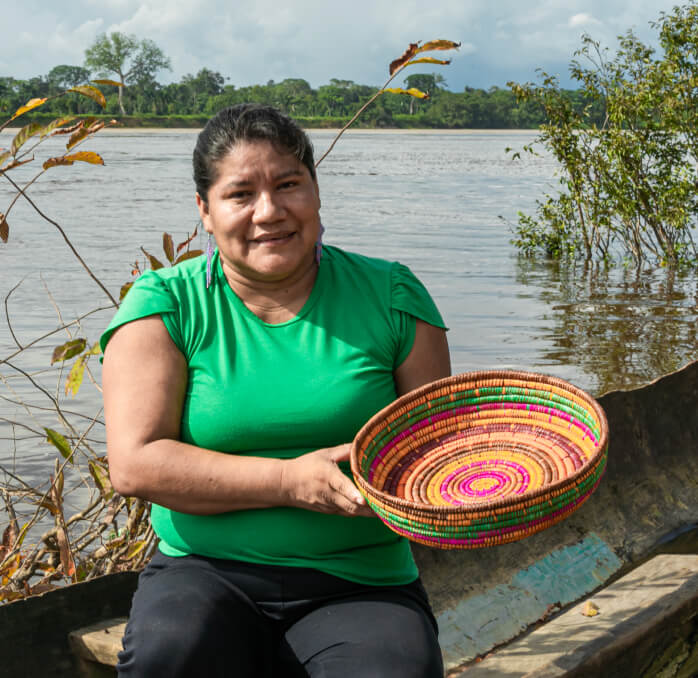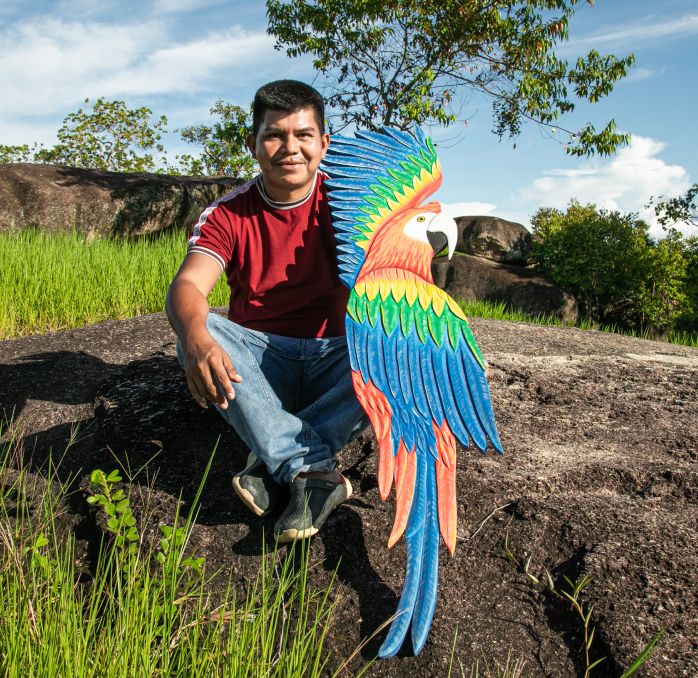Ferney Gaitán Cabarte
Workshop: Tzaze
Craft: Trabajos en madera
Trail: Guainía Route
Location: Inírida, Guainía
Ferney delves into the distinction between soft and hard woods, identifying them by name. Reflecting on a distant memory, he reminisces about carving a 40-centimeter-long macaw from Palosangre, a hard wood, during his childhood, though he laments having recently lost it. His journey into craftsmanship began observing his father and grandfather fashioning kitchen and tableware from hardwoods. He imbibed the lesson that hardwood remains the optimal choice for crafting plates and vessels. Curiously, despite this, he now earns his livelihood by working with softwoods— fashioning pieces from palo boya, balso, sasafraz, and parature.
His artworks etch the landscapes surrounding him onto these woods, offering tourists a tangible memento of Guainía to take home. Ferney’s life, characterized by hunting, fishing, and farming, continually inspires his artistic endeavors. In the Piapoco indigenous community, it’s customary for men to undertake these multifaceted roles. Wandering the rainforest has granted him an encyclopedic knowledge of local birds. While macaws remain his popular creations, he adeptly carves numerous other avian species. Exploring the wilderness, he’s encountered jungle rodents like picures and lapas, along with cajuches—wild pigs integral to his diet, each brought to life through his beloved woods.
Moreover, sailing the Inirida River, he reels in an array of fish species such as mataguaro, pavón, palometa, guaracú, mojarra, bocón, caribe catfish, and bocachico. This rich diversity furnishes him with the inspiration to craft “”strings of fish””—bundles featuring four or six intricately carved fish exhibiting their distinctive patterns, ideal for adorning homes without imposing harm on nature.
Despite being barely forty, Ferney has honed his woodworking skills since the tender age of ten. His community originally resided in Vichada but, due to multiple relocations often prompted by security concerns, they navigated the Guaviare River to eventually settle in Guainía. Like many distinct ethnic groups, the Piapoco identified themselves with an animal—in their case, the toucan. Comprising twelve families, known as Tzaze, each with eight to ten members, his community underwent upheaval when faced with the threat of forced recruitment by guerrilla groups. To protect the four adolescent males in his family, Ferney’s parents made the decisive choice to flee to Guainía. While his own children fluently speak the Piapoco language, Ferney regrets the fact that his parents never imparted their people’s rituals and customs, resulting in their loss.
His mastery of woodworking comes from closely observing his people: witnessing men select wood pieces, wielding tools, and carving. They instilled in him the ethos of utilizing fallen wood rather than heedlessly felling trees. To Ferney, every small piece of wood encapsulates a latent shape, both functional and beautiful. Perhaps this explains his affinity for the softwoods flourishing in riverside thickets. He enjoys working with them and bringing us back to the rainforest. For Ferney, it’s a form of resistance against oblivion—to immortalize his landscape, immortalize its splendor, ensuring that we never forget our connection to his land.
Craft
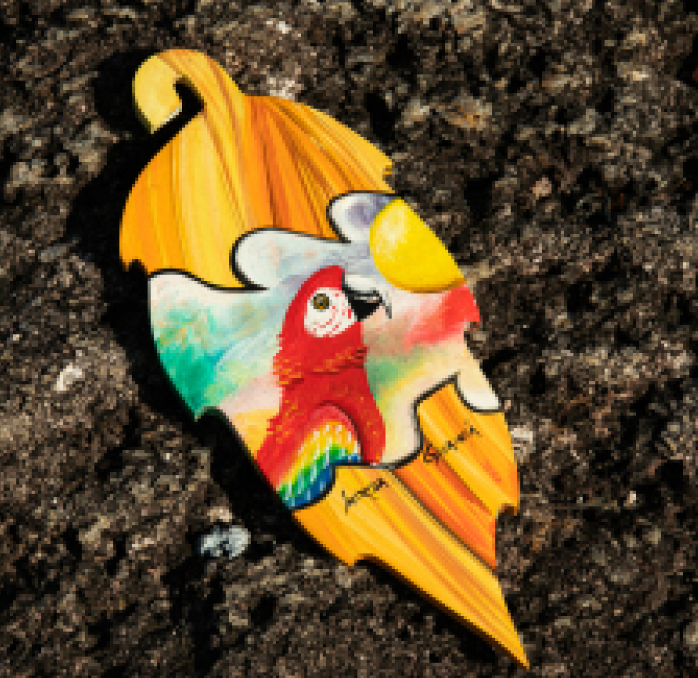

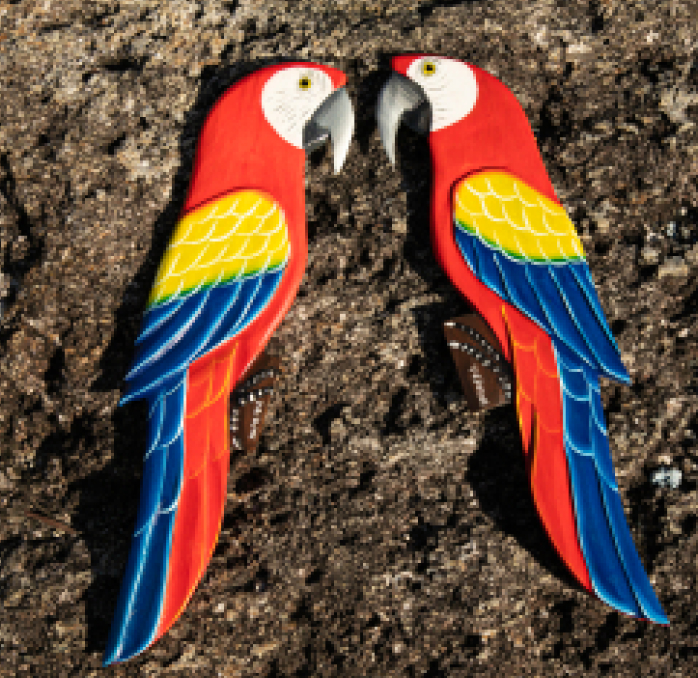
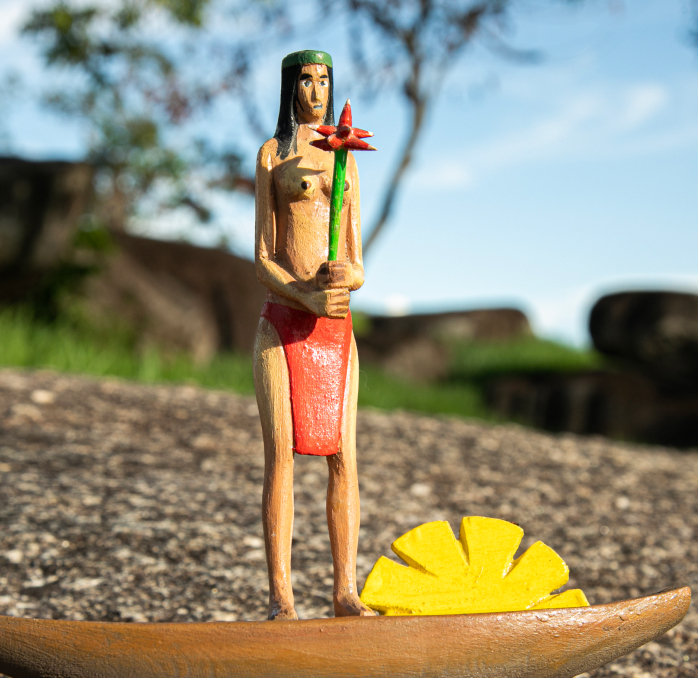


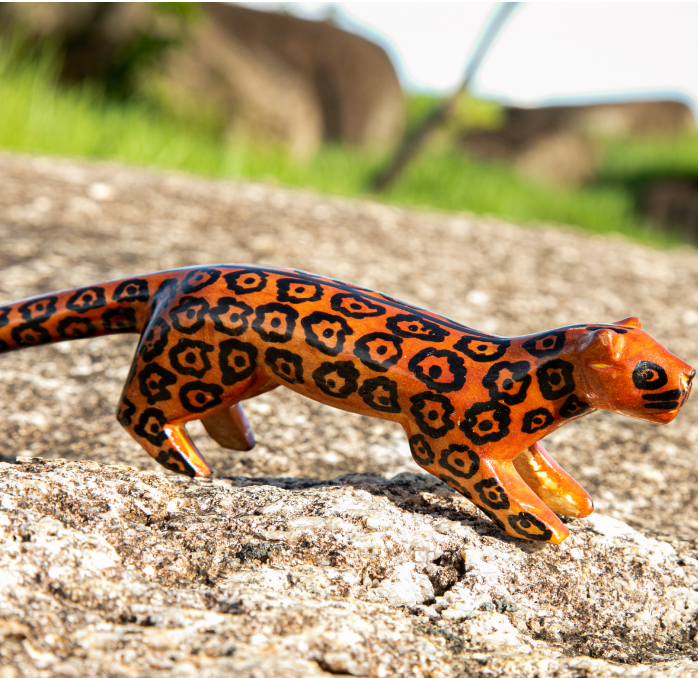
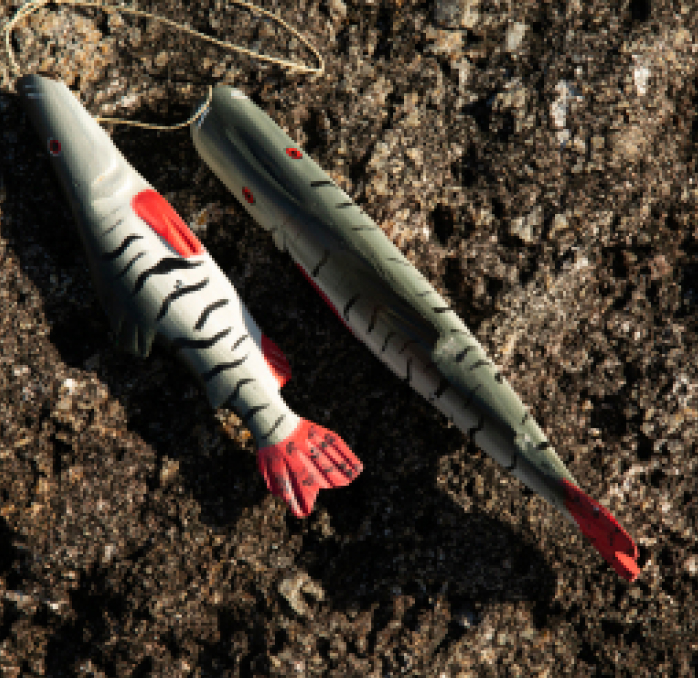








Artisans along the way
Artisans along the way
No puede copiar contenido de esta página









































